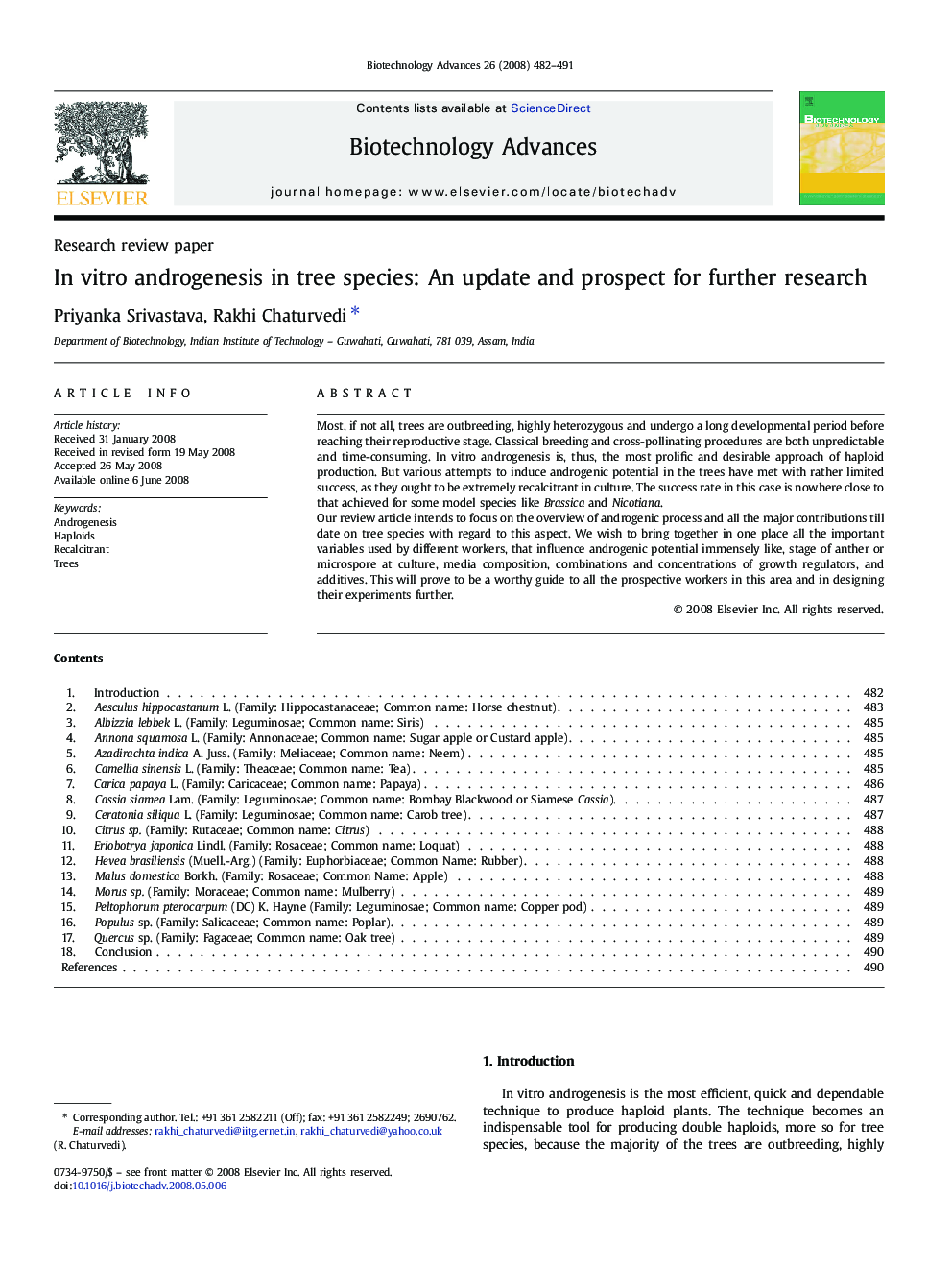| Article ID | Journal | Published Year | Pages | File Type |
|---|---|---|---|---|
| 14780 | Biotechnology Advances | 2008 | 10 Pages |
Most, if not all, trees are outbreeding, highly heterozygous and undergo a long developmental period before reaching their reproductive stage. Classical breeding and cross-pollinating procedures are both unpredictable and time-consuming. In vitro androgenesis is, thus, the most prolific and desirable approach of haploid production. But various attempts to induce androgenic potential in the trees have met with rather limited success, as they ought to be extremely recalcitrant in culture. The success rate in this case is nowhere close to that achieved for some model species like Brassica and Nicotiana.Our review article intends to focus on the overview of androgenic process and all the major contributions till date on tree species with regard to this aspect. We wish to bring together in one place all the important variables used by different workers, that influence androgenic potential immensely like, stage of anther or microspore at culture, media composition, combinations and concentrations of growth regulators, and additives. This will prove to be a worthy guide to all the prospective workers in this area and in designing their experiments further.
